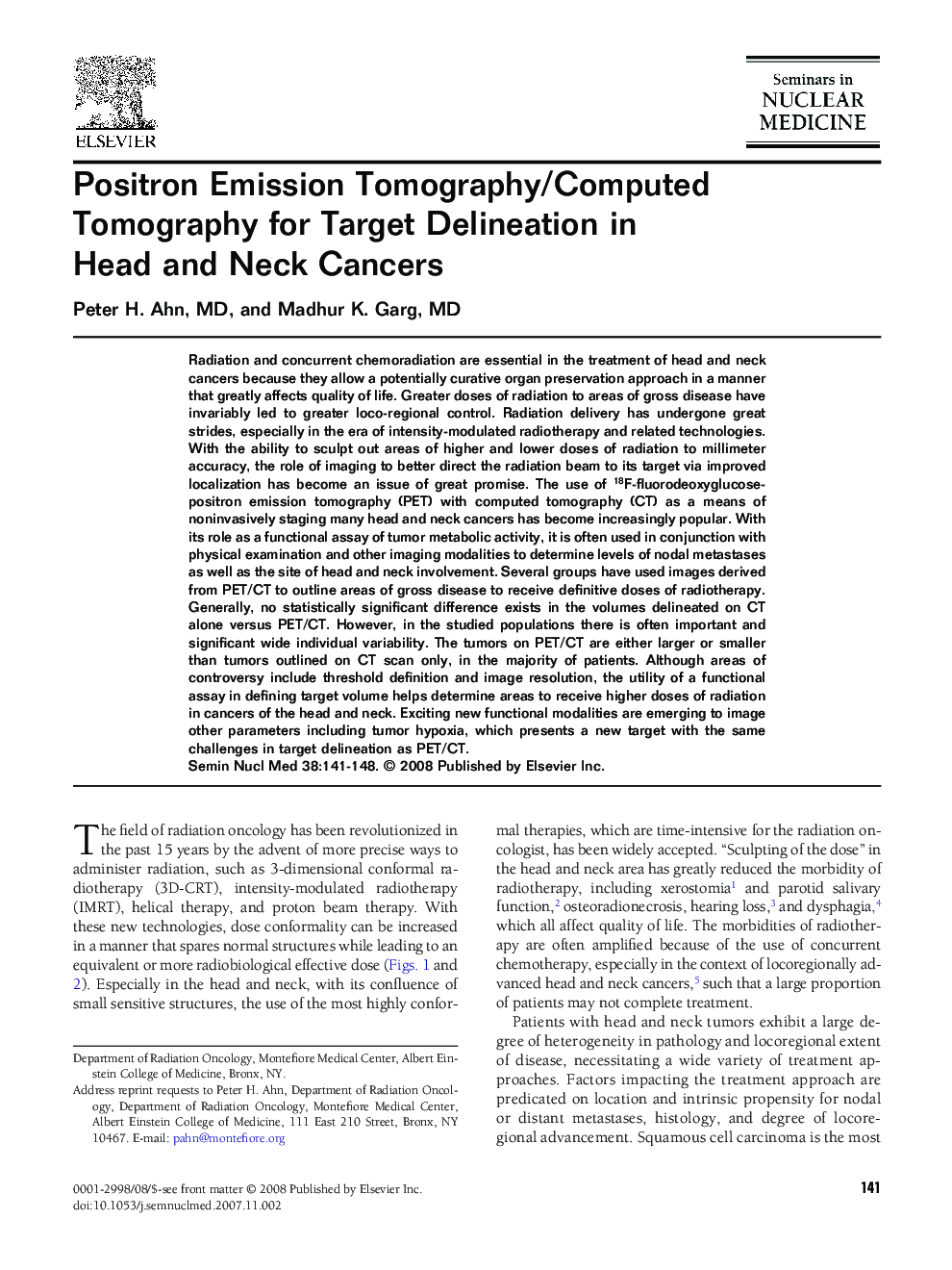| Article ID | Journal | Published Year | Pages | File Type |
|---|---|---|---|---|
| 4251154 | Seminars in Nuclear Medicine | 2008 | 8 Pages |
Radiation and concurrent chemoradiation are essential in the treatment of head and neck cancers because they allow a potentially curative organ preservation approach in a manner that greatly affects quality of life. Greater doses of radiation to areas of gross disease have invariably led to greater loco-regional control. Radiation delivery has undergone great strides, especially in the era of intensity-modulated radiotherapy and related technologies. With the ability to sculpt out areas of higher and lower doses of radiation to millimeter accuracy, the role of imaging to better direct the radiation beam to its target via improved localization has become an issue of great promise. The use of 18F-fluorodeoxyglucose-positron emission tomography (PET) with computed tomography (CT) as a means of noninvasively staging many head and neck cancers has become increasingly popular. With its role as a functional assay of tumor metabolic activity, it is often used in conjunction with physical examination and other imaging modalities to determine levels of nodal metastases as well as the site of head and neck involvement. Several groups have used images derived from PET/CT to outline areas of gross disease to receive definitive doses of radiotherapy. Generally, no statistically significant difference exists in the volumes delineated on CT alone versus PET/CT. However, in the studied populations there is often important and significant wide individual variability. The tumors on PET/CT are either larger or smaller than tumors outlined on CT scan only, in the majority of patients. Although areas of controversy include threshold definition and image resolution, the utility of a functional assay in defining target volume helps determine areas to receive higher doses of radiation in cancers of the head and neck. Exciting new functional modalities are emerging to image other parameters including tumor hypoxia, which presents a new target with the same challenges in target delineation as PET/CT.
